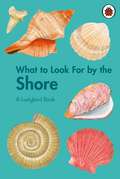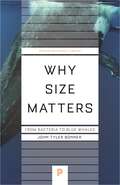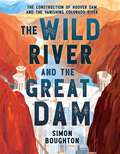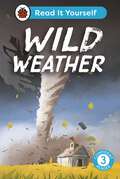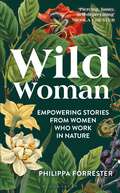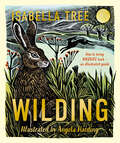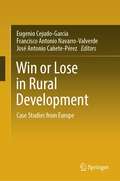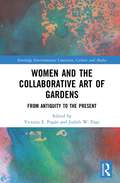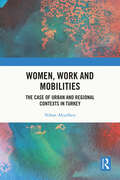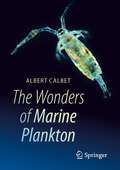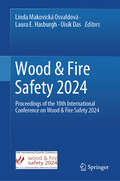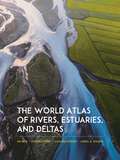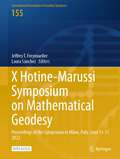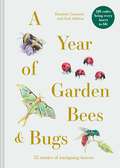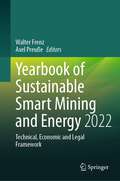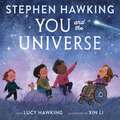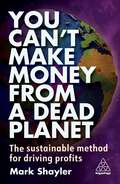- Table View
- List View
What to Look For by the Shore (A Ladybird Book)
by Becky BrownComb through beaches for fossils and dive into rock pools in this fun, informative guide to the beauties found along and around seashores.Ever wondered which fossils you may find in the sand at the beach or why they have flags at the beach?This book takes a closer look at sights you can see along and under the shores such as lighthouses, sandcastles, sea sports and the creatures found in rock pools.Want more? Follow the changing seasons with the other titles in the What to Look For... series:What to Look For in SpringWhat to Look For in SummerWhat to Look For in AutumnWhat to Look For in Winter
What We Owe to Nonhuman Animals: The Historical Pretensions of Reason and the Ideal of Felt Kinship (Routledge Human-Animal Studies Series)
by Gary SteinerThis book strongly challenges the Western philosophical tradition's assertion that humans are superior to nonhuman animals. It makes a case for the full and direct moral status of nonhuman animals. The book provides the basis for a radical critique of the entire trajectory of animal studies over the past fifteen years. The key idea explored is that of ‘felt kinship’—a sense of shared fate with and obligations to all sentient life. It will help to inspire some deep rethinking on the part of leading exponents of animal studies. The book's strong outlook is expressed through an appeal for radical humility on the side of humans rather than a constant reference to the ‘human-animal divide’. Historical figures examined in depth include Aristotle, Seneca, and Kant; contemporary figures examined include Christine Korsgaard and Martha Nussbaum. This book presents an account according to which the tradition has not proceeded on the basis of impartial motivations at all, but instead has made a set of pointedly self-serving assumptions about the proper criteria for assessing moral worth. Readers of this book will gain exposure to a wide variety of thinkers in the Western philosophical tradition, historical as well as contemporary. This book is suitable for professionals working in nonhuman animal studies, students, advanced undergraduates, and practitioners working in the fields of philosophy, environmental studies, law, literature, anthropology, and related fields.
What We Owe to Nonhuman Animals: The Historical Pretensions of Reason and the Ideal of Felt Kinship (Routledge Human-Animal Studies Series)
by Gary SteinerThis book strongly challenges the Western philosophical tradition's assertion that humans are superior to nonhuman animals. It makes a case for the full and direct moral status of nonhuman animals. The book provides the basis for a radical critique of the entire trajectory of animal studies over the past fifteen years. The key idea explored is that of ‘felt kinship’—a sense of shared fate with and obligations to all sentient life. It will help to inspire some deep rethinking on the part of leading exponents of animal studies. The book's strong outlook is expressed through an appeal for radical humility on the side of humans rather than a constant reference to the ‘human-animal divide’. Historical figures examined in depth include Aristotle, Seneca, and Kant; contemporary figures examined include Christine Korsgaard and Martha Nussbaum. This book presents an account according to which the tradition has not proceeded on the basis of impartial motivations at all, but instead has made a set of pointedly self-serving assumptions about the proper criteria for assessing moral worth. Readers of this book will gain exposure to a wide variety of thinkers in the Western philosophical tradition, historical as well as contemporary. This book is suitable for professionals working in nonhuman animal studies, students, advanced undergraduates, and practitioners working in the fields of philosophy, environmental studies, law, literature, anthropology, and related fields.
Why Size Matters: From Bacteria to Blue Whales (Princeton Science Library #142)
by John Tyler BonnerJohn Tyler Bonner, one of our most distinguished and creative biologists, here offers a completely new perspective on the role of size in biology. In his hallmark friendly style, he explores the universal impact of being the right size. By examining stories ranging from Alice in Wonderland to Gulliver's Travels, he shows that humans have always been fascinated by things big and small. Why then does size always reside on the fringes of science and never on the center stage? Why do biologists and others ponder size only when studying something else—running speed, life span, or metabolism?Why Size Matters, a pioneering book of big ideas in a compact size, gives size its due by presenting a profound yet lucid overview of what we know about its role in the living world. Bonner argues that size really does matter—that it is the supreme and universal determinant of what any organism can be and do. For example, because tiny creatures are subject primarily to forces of cohesion and larger beasts to gravity, a fly can easily walk up a wall, something we humans cannot even begin to imagine doing.Bonner introduces us to size through the giants and dwarfs of human, animal, and plant history and then explores questions including the physics of size as it affects biology, the evolution of size over geological time, and the role of size in the function and longevity of living things.As this elegantly written book shows, size affects life in its every aspect. It is a universal frame from which nothing escapes.
Why Size Matters: From Bacteria to Blue Whales (Princeton Science Library #142)
by John Tyler BonnerJohn Tyler Bonner, one of our most distinguished and creative biologists, here offers a completely new perspective on the role of size in biology. In his hallmark friendly style, he explores the universal impact of being the right size. By examining stories ranging from Alice in Wonderland to Gulliver's Travels, he shows that humans have always been fascinated by things big and small. Why then does size always reside on the fringes of science and never on the center stage? Why do biologists and others ponder size only when studying something else—running speed, life span, or metabolism?Why Size Matters, a pioneering book of big ideas in a compact size, gives size its due by presenting a profound yet lucid overview of what we know about its role in the living world. Bonner argues that size really does matter—that it is the supreme and universal determinant of what any organism can be and do. For example, because tiny creatures are subject primarily to forces of cohesion and larger beasts to gravity, a fly can easily walk up a wall, something we humans cannot even begin to imagine doing.Bonner introduces us to size through the giants and dwarfs of human, animal, and plant history and then explores questions including the physics of size as it affects biology, the evolution of size over geological time, and the role of size in the function and longevity of living things.As this elegantly written book shows, size affects life in its every aspect. It is a universal frame from which nothing escapes.
The Wild River and the Great Dam: The Construction of Hoover Dam and the Vanishing Colorado River
by Simon Boughton★ "In this detailed and informative work, Boughton chronicles the construction of the Hoover Dam via compellingly comprehensive text." —Publishers Weekly, starred review ★ "This well-written narrative is bound to become the authority on this modern American marvel." —Booklist, starred review"A fascinating blend of social and environmental history and engineering." —Kirkus Reviews "Truly breathtaking. This is a powerful story and like the water slowly rising behind that concrete barrier, it becomes more powerful with each page turn." —David Macaulay, two-time recipient of the Caldecott Medal and creator of the bestselling The Way Things Work"An exciting mix of research, storytelling, and an astounding true story—one that&’s still unfolding today." —Steve Sheinkin, three-time National Book Award finalist and Newbery Honor author of Bomb Discover the complicated history behind the construction of Hoover Dam—one of the country&’s most recognizable and far-reaching landmarks—and its lasting political and environmental effects on the Colorado River and the American West. At the time of its completion in 1936, Hoover Dam was the biggest dam in the world and the largest feat of architecture and engineering in the country—a statement of national ambition and technical achievement. It turned the wild Colorado River into a tame and securely managed water source, transforming millions of acres of desert into farmland while also providing water and power to the fast-growing population of the Southwest. The concrete monolith quickly became a symbol of American ingenuity; however, its history is laden with contradiction. It provided work for thousands, but it was a dangerous project that exploited desperate workers during the Depression. It helped secure the settlement and economies of the Southwest, but at the expense of Indigenous peoples and the environment; and it created a dependency on the Colorado River&’s water, which is under threat from overuse and climate change. Weaving together elements of engineering, geography, and political and socioeconomic history, and drawing heavily from unpublished oral histories taken from dam workers and their families, Simon Boughton&’s thoughtful and compelling debut—featuring historical photographs throughout—follows the construction and impact of Hoover Dam, and how its promise of abundance ultimately created a river in crisis today.
Wild Weather: Read It Yourself - Level 3 Confident Reader (Read It Yourself)
by LadybirdWhat is the weather like where you live? In Antarctica it is very cold, but Death Valley is very hot. Read all about monsoons, tornadoes and hurricanes in different places around the world with wild weather. Wild Weather is from Confident Reader Level 3 and is perfect for more confident readers aged from 6+ who can read simple stories with help.Each book has been carefully checked by educational and subject consultants and includes comprehension puzzles, book band information, and tips for helping children with their reading. With five levels to take children from first phonics to fluent reading and a wide range of different stories and topics for every interest, Read It Yourself helps children build their confidence and begin reading for pleasure.
Wild Woman: Empowering Stories from Women who Work in Nature
by Philippa ForresterAn engaging blend of conservation stories and humorous, personal anecdotes from Philippa Forrester about women who, like her, choose to live and work in the wild.Surviving in the wilderness has long been associated with men, and conservation and environmental biology have traditionally been male-dominated subjects. Yet many remarkable women also choose to live and work in wild and challenging landscapes. In Wild Woman, Philippa Forrester considers the grit and determination required for women to maintain connections to wildlife and shares stories of female conservation heroes and other extraordinary wild women working in nature. Talking to women from around the world, Philippa studies and celebrates what it means to be a wild woman. From the sixteenth-century botanist who was the first woman to circumnavigate the globe to modern-day women responding to bear attacks in Yellowstone, working to rewild reserves in South Africa, photographing Caribou in the Arctic and more, Philippa examines how these women benefit from a life spent in the wilderness and also considers what the natural world gains from them. Relating some of her own experiences from three decades spent travelling around the world and working in some of the wildest places on Earth, Philippa asks: what does it take for a woman to live or work in the wild?
Wilding: How To Bring Wildlife Back - An Illustrated Guide
by Isabella TreeWilding: How to Bring Wildlife Back - An Illustrated Guide is a stunningly beautiful gift book written by Isabella Tree which tells the story of the Knepp Estate in West Sussex. It is illustrated in full colour with lino prints and watercolours by Angela Harding (A Year Unfolding) and photographs from Knepp.Knepp is now home to some of the rarest and most beautiful creatures in the UK, including nightingales, kingfishers, turtle doves and peregrine falcons, hazel dormice and harvest mice, scarce chaser dragonflies and purple emperor butterflies. The sheer abundance of life is staggering too. When you walk out into the scrubland on an early spring morning the sound of birdsong is so loud it feels like it’s vibrating in your lungs. This is the story of Knepp, and a guide telling you how to bring wildlife back where you live.Includes timelines, an indepth look at rewilding, spotlight features about native animals including species that have returned and thrive - butterflies, bats, owls and beetles. There are accessible in-garden activities to 're-wild' your own spaces and the book encourages you to slow down and observe the natural world around you, understand the connections between species and habitats, and the huge potential for life right on your doorstep.
Win or Lose in Rural Development: Case Studies from Europe
by Eugenio Cejudo-García Francisco Antonio Navarro-Valverde José Antonio Cañete-PérezThe aims of this book are: systematization and theorization of these projects; clarify and deepen the social and territorial effects of these initiatives; in-depth study of the causes that lead to the generation of successful projects in rural development; and abound in the reasons that lead specific projects to be failed in the access to LEADER support and be finally not implemented. This process of systematization and theorization would contribute to improving the decision-making in rural development, concretely the practice of these policies and initiatives. The book shows the problems, results and best practices that cause the rural development in different areas along with Europe. The multidisciplinary and international character of the authors in the analysis of rural development will enrich the publication and facilitate the different and critical reflections on the contributions, errors and meaning of these rural development practices.
Women and the Collaborative Art of Gardens: From Antiquity to the Present (Routledge Environmental Literature, Culture and Media)
Women and the Collaborative Art of Gardens explores the garden and its agency in the history of the built and natural environments, as evidenced in landscape architecture, literature, art, archaeology, history, photography, and film. Throughout the book, each chapter centers the act of collaboration, from garden clubs of the early twentieth century as powerful models of women’s leadership, to the more intimate partnerships between family members, to the delicate relationship between artist and subject. Women emerge in every chapter, whether as gardeners, designers, owners, writers, illustrators, photographers, filmmakers, or subjects, but the contributors to this dynamic collection unseat common assumptions about the role of women in gardens to make manifest the significant ways in which women write themselves into the accounts of garden design, practice, and history. The book reveals the power of gardens to shape human existence, even as humans shape gardens and their representations in a variety of media, including brilliantly illuminated manuscripts, intricately carved architectural spaces, wall paintings, black and white photographs, and wood cuts. Ultimately, the volume reveals that gardens are best apprehended when understood as products of collaboration. The book will be of interest to scholars and students of gardens and culture, ancient Rome, art history, British literature, medieval France, film studies, women’s studies, photography, African American Studies, and landscape architecture.
Women and the Collaborative Art of Gardens: From Antiquity to the Present (Routledge Environmental Literature, Culture and Media)
by Victoria E. Pagán Judith W. PageWomen and the Collaborative Art of Gardens explores the garden and its agency in the history of the built and natural environments, as evidenced in landscape architecture, literature, art, archaeology, history, photography, and film. Throughout the book, each chapter centers the act of collaboration, from garden clubs of the early twentieth century as powerful models of women’s leadership, to the more intimate partnerships between family members, to the delicate relationship between artist and subject. Women emerge in every chapter, whether as gardeners, designers, owners, writers, illustrators, photographers, filmmakers, or subjects, but the contributors to this dynamic collection unseat common assumptions about the role of women in gardens to make manifest the significant ways in which women write themselves into the accounts of garden design, practice, and history. The book reveals the power of gardens to shape human existence, even as humans shape gardens and their representations in a variety of media, including brilliantly illuminated manuscripts, intricately carved architectural spaces, wall paintings, black and white photographs, and wood cuts. Ultimately, the volume reveals that gardens are best apprehended when understood as products of collaboration. The book will be of interest to scholars and students of gardens and culture, ancient Rome, art history, British literature, medieval France, film studies, women’s studies, photography, African American Studies, and landscape architecture.
Women, Work and Mobilities: The case of urban and regional contexts in Turkey
by Nihan AkyelkenThis book explores the wider implications of how workers move within and across cities and regions to reach economic opportunities. It does so with a specific focus on women in urban and regional contexts in Turkey. The book reveals specificities and generalisations about mobility patterns of women in low-income households/low-paid jobs and how these change in the existence of urban and regional interventions, such as industrial zoning, urban transformations and mobility restrictions. The book presents new theorisations of work and mobility through labour agency, showing how mobility changes the recruitment and use of labour under state interventions. It orchestrates the existing narratives of containment, mobility and rootedness to shed light on the role of labour agency in organising livelihoods. The book particularly acknowledges the multiscale, multifaceted and relational nature of mobilities entailed in the economy by bringing the role of labour agency into urban and regional contexts. This book will appeal to researchers and students working on labour geography, feminist geography, mobilities and urban studies.
Women, Work and Mobilities: The case of urban and regional contexts in Turkey
by Nihan AkyelkenThis book explores the wider implications of how workers move within and across cities and regions to reach economic opportunities. It does so with a specific focus on women in urban and regional contexts in Turkey. The book reveals specificities and generalisations about mobility patterns of women in low-income households/low-paid jobs and how these change in the existence of urban and regional interventions, such as industrial zoning, urban transformations and mobility restrictions. The book presents new theorisations of work and mobility through labour agency, showing how mobility changes the recruitment and use of labour under state interventions. It orchestrates the existing narratives of containment, mobility and rootedness to shed light on the role of labour agency in organising livelihoods. The book particularly acknowledges the multiscale, multifaceted and relational nature of mobilities entailed in the economy by bringing the role of labour agency into urban and regional contexts. This book will appeal to researchers and students working on labour geography, feminist geography, mobilities and urban studies.
The Wonders of Marine Plankton
by Albert CalbetMarine plankton, despite their tiny size, are crucial for the functioning of marine food webs. It is not just about one organism eating another; when this happens, it helps release the nutrients accumulated within living matter, making them available again for microalgae. Plankton are present in freshwater and in all the seas and oceans on the planet. Moreover, they are responsible for supporting life on Earth and has provided us (on geological timescales) with a significant portion of the oxygen we breathe. In just a small spoonful of seawater, we can find around fifty million viruses, five million bacteria, hundreds of thousands of small unicellular flagellates, thousands of microscopic algae, five heterotrophic ciliates or dinoflagellates, and, with some luck, a small crustacean like copepods. This book aims to bridge the gap between scientific research and the general public, offering a captivating exploration of the fascinating world of marine plankton. Through engaging narratives and visually compelling illustrations, readers will gain insights into the importance of plankton in marine ecosystems, their diverse forms, and the crucial role they play in maintaining our planet's health.
Wood & Fire Safety 2024: Proceedings of the 10th International Conference on Wood & Fire Safety 2024
by Oisik Das Linda Makovická Osvaldová Laura E. HasburghThis proceedings volume presents new scientific works of the research workers and experts in the field of Wood Science & Fire.It looks into the properties of various tree species across the continents affecting the fire-technical properties of wood and wood-based materials, its modifications, fire-retardant methods and other technological processes that have an impact on wood ignition and burning. The results of these findings have a direct impact on Building Construction and Design describing the fire safety of wooden buildings, mainly large and multi-story ones. The results of these experiments and findings may be applied, or are directly implemented into Fire Science, Hazard Control, Building Safety which makes the application of wood and wood materials in buildings possible, while maintaining strict fire regulations.One part of the contributions focuses on the symbiosis of the material and the fire-fighting technologies. Wood burning has its own specific features, therefore, the fire protection technologies need to be updated regularly. It also includes the issue of the intervention of fire-fighting and rescue teams in the fires of wooden buildings. Presentations deal with the issue of forest fires influenced by the climate changes, relief, fuel models based on the type and the age of the forest stand.
Workers of the Earth: Labour, Ecology and Reproduction in the Age of Climate Change
by Stefania BarcaCapitalism is destroying our planet, but like most social progress in the last two centuries, ecological justice can only be achieved through working-class struggle.In Workers of the Earth, Stefania Barca uncovers the environmental history and political ecology of labour to shed new light on the potentiality of workers as ecological subjects. Taking an ecofeminist approach, this ground-breaking book makes a unique contribution to the emerging field of environmental labour studies, expanding the category of labour to include waged and unwaged, industrial and meta-industrial workers.Going beyond conventional categories of ‘production’ and ‘reproduction’ as separate spheres of human experience, Barca offers a fresh perspective on the place of labour in today’s global climate struggle, reminding us that the fight against climate change is a fight against capitalism.
The World Atlas of Rivers, Estuaries, and Deltas
by Jim Best Stephen Darby Luciana Esteves Carol WilsonA stunningly illustrated atlas of the world&’s rivers, estuaries, and deltas, and their ecosystemsFrom the Congo and the Mekong to the Seine and the Mississippi, Earth&’s rivers carve through landscapes before coursing into the world&’s oceans through estuaries and deltas. Their inexorable flow carries sediment and more, acting as lifeblood for a variety of ecosystems and communities. More than any other surface feature of Earth, rivers, estuaries, and deltas are vitally important to our economic and social well-being, and our management of them often sits at the sharp edge of today&’s most pressing environmental challenges. The World Atlas of Rivers, Estuaries, and Deltas takes readers on an unforgettable tour of these dynamic bodies of water, explaining how they function at each stage of their flow. Combining maps and graphics with informative essays and beautiful photos, this invaluable reference book will give you a new appreciation for the power that rivers, estuaries, and deltas wield.Features a wealth of color photos, maps, and infographicsBrings together invaluable perspectives from leading expertsDescribes the rich biodiversity associated with the world&’s rivers, estuaries, and deltasExplains how rivers, estuaries, and deltas work, from river networks to deltaic floodplains, and sheds light on the erosion, movement, and deposition of sedimentDescribes the anatomy of rivers, estuaries, and deltas, from channel geometry and river planforms to estuarine shape and delta morphologyExamines the ecology and ecosystems of rivers, estuaries, and deltas and how humans interact with these environmentsAdditional topics include damming, climate change, water use, pollution, resource management, and planetary health, as well as future perspectives on these vital landscapes
World Review: Environmental and Sustainability Education in the Context of the Sustainable Development Goals
The global landscape of education has been reshaped by the COVID-19 pandemic, revealing the various challenges faced by countries worldwide. This book provides a comprehensive exploration of Environmental and Sustainability Education (ESE) across different countries, offering unique insights into their histories, challenges, achievements, and future ESE needs. From Africa to Oceania, the book delves into the vital role of ESE in the context of the UN Sustainable Development Goals. It highlights the diverse national discourses and the flexibility required to deliver effective global education programs. ESE practitioners, researchers, and policymakers worldwide will find inspiration and invaluable perspectives in this book.
World Review: Environmental and Sustainability Education in the Context of the Sustainable Development Goals
by Marco Rieckmann Rosalba Thomas MuñozThe global landscape of education has been reshaped by the COVID-19 pandemic, revealing the various challenges faced by countries worldwide. This book provides a comprehensive exploration of Environmental and Sustainability Education (ESE) across different countries, offering unique insights into their histories, challenges, achievements, and future ESE needs. From Africa to Oceania, the book delves into the vital role of ESE in the context of the UN Sustainable Development Goals. It highlights the diverse national discourses and the flexibility required to deliver effective global education programs. ESE practitioners, researchers, and policymakers worldwide will find inspiration and invaluable perspectives in this book.
X Hotine-Marussi Symposium on Mathematical Geodesy: Proceedings of the Symposium in Milan, Italy, June 13-17, 2022 (International Association of Geodesy Symposia #155)
by Jeffrey T. Freymueller Laura SánchezThis open access volume contains the proceedings of the X Hotine-Marussi Symposium on Mathematical Geodesy which was held from 13 to 17 June 2022 at the Politecnico di Milano, Milan, Italy. Since 2006 the series of the Hotine-Marussi Symposia has been under the responsibility of the Inter-Commission Committee on Theory (ICCT) within the International Association of Geodesy (IAG). The ICCT organized the last five Hotine-Marussi Symposia held in Wuhan (2006), Rome (2009, 2013 and 2018), and Milan (2022). The overall goal of the ICCT and Hotine-Marussi Symposia has always been to advance geodetic theory which is indeed documented by the 22 research articles published in these proceedings. The jubilee X Hotine-Marussi Symposium was organized in 10 topical sessions covering all parts of geodetic theory including reference frames, gravity field modelling, adjustment theory, height systems, time series analysis, or advanced numerical methods. In total, 60 participants attended the Symposium who delivered 62 oral and 18 poster presentations. During a special session, five invited speakers discussed two basic concepts of physical geodesy – geoid and quasigeoid.
A Year of Garden Bees and Bugs: 52 stories of intriguing insects
by Dominic Couzens Gail AshtonA fascinating journey into the secret life of insects, with QR codes linked to videos that bring every creature to life. Just as birds have yearly rhythms, so do bees, beetles, butterflies and other insects. Wildlife experts Dominic Couzens and Gail Ashton discover 52 minibeasts from around the world. They tell the story of what is happening week-by-week in the insect world, in our own backyards, window boxes and in hidden corners of our homes. From the daily grind of the house spider building a new web each morning, to the vast appetites of ladybirds, which can devour hundreds of aphids a day, and the glory of the Stag beetle's maiden flight. We delve into the world of the lethal Sydney funnelweb spider in Australian gardens, the migratory mission of the Monarch butterfly in America and the life of the backdoor scorpions in South Africa. In among the seasonal behaviour, the authors have woven history and folklore. These brilliant stories are complemented by wonderful illustrations by Lesley Buckingham that bring out the beauty of the entomological world. A QR code for each entry takes you to a video file to further explore the habits of these intriguing creatures. Revealing the true wonder of our insect neighbours, this book will appeal to all nature lovers.
Yearbook of Sustainable Smart Mining and Energy 2022: Technical, Economic and Legal Framework (Yearbook of Sustainable Smart Mining and Energy - Technical, Economic and Legal Framework #2)
by Walter Frenz Axel PreußeThis book covers several aspects of the application of Sustainable Development Goals to mining related subjects. The included works range from methods to assess and implement sustainability to discussions of legal impacts and relations as well as technological developments and outlooks. First, the challenges and opportunities of clean energy transition in the African mining sector are described. With regard to the assessment of sustainable developments, this book includes the applications of the sieving method, the concept of thermodynamics and the United Nations Framework Classification to mining projects and case studies. The implementation of Sustainable Development Goals into academic project work and education of geo-engineers is covered as well. The legal topics contain discussions of corporate climate liabilities and extraterritorial legal responsibilities as well as an analysis of the impact of the German Federal Constitutional Court's climate decision. Important mining aspects and technological developments like proactive water management, sustainable approaches to mine closure and implementation of ventilation on demand in underground mines are described. In addition, the state and potential of the Mongolian raw materials industry is covered. The Sustainable Smart Mining and Energy Yearbook is not only aimed at researchers and professionals, but at all who want to get an overview of current important technical and legal topics in this field.
You and the Universe
by Lucy Hawking Stephen Hawking'We are all time-travellers, journeying together into the future. Be brave. Be determined. Let's work together to make that future a place we want to visit.'Based on Professor Hawking's 2018 Earth Day address, this inspiring picture asks children everywhere to look up and wonder at the world around them - just as Professor Hawking did his whole life. Including questions and answers to some big science topics, perfectly explained for young readers by Professor Hawking's daughter, Lucy, and beautifully illustrated by Xin Li, this is the perfect read for curious minds.
You Can’t Make Money From a Dead Planet: The Sustainable Method for Driving Profits
by Mark ShaylerDoing good is no longer a luxury or a 'nice to have', it's a necessity.While businesses, both big and small, have undoubtedly caused the majority of our environmental and sustainability problems, only they can solve these issues at scale. You Can't Make Money from a Dead Planet looks at the challenges we face and shows how business needs to change in order to be the driver of the solution. Bestselling author and sustainability strategist Mark Shayler explains why there is no contradiction between being profitable and doing the right thing for the planet and doing the right thing for your customers. Providing the insights, the enthusiasm and the tools to align your business with sustainability, it blends explanations of the challenges that we face, with stories from those business that have excelled in sustainability. Exploring current sustainability approaches and trends including net-zero, circular economy, ESG, B-Corps, zero waste and environmental management systems, You Can't Make Money From a Dead Planet explains, debunks and helps you navigate the sustainable agenda while growing your business.
